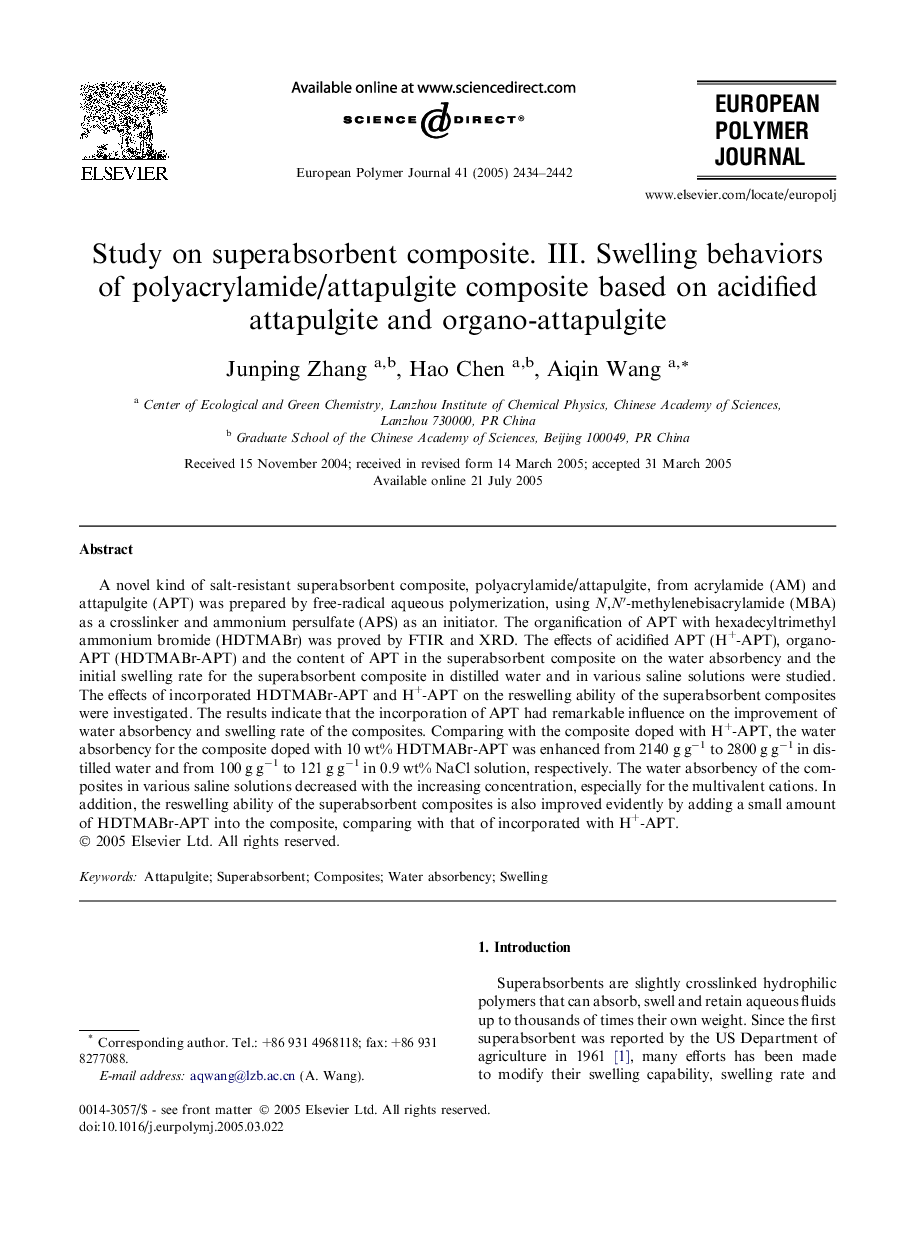| Article ID | Journal | Published Year | Pages | File Type |
|---|---|---|---|---|
| 1400336 | European Polymer Journal | 2005 | 9 Pages |
A novel kind of salt-resistant superabsorbent composite, polyacrylamide/attapulgite, from acrylamide (AM) and attapulgite (APT) was prepared by free-radical aqueous polymerization, using N,N′-methylenebisacrylamide (MBA) as a crosslinker and ammonium persulfate (APS) as an initiator. The organification of APT with hexadecyltrimethyl ammonium bromide (HDTMABr) was proved by FTIR and XRD. The effects of acidified APT (H+-APT), organo-APT (HDTMABr-APT) and the content of APT in the superabsorbent composite on the water absorbency and the initial swelling rate for the superabsorbent composite in distilled water and in various saline solutions were studied. The effects of incorporated HDTMABr-APT and H+-APT on the reswelling ability of the superabsorbent composites were investigated. The results indicate that the incorporation of APT had remarkable influence on the improvement of water absorbency and swelling rate of the composites. Comparing with the composite doped with H+-APT, the water absorbency for the composite doped with 10 wt% HDTMABr-APT was enhanced from 2140 g g−1 to 2800 g g−1 in distilled water and from 100 g g−1 to 121 g g−1 in 0.9 wt% NaCl solution, respectively. The water absorbency of the composites in various saline solutions decreased with the increasing concentration, especially for the multivalent cations. In addition, the reswelling ability of the superabsorbent composites is also improved evidently by adding a small amount of HDTMABr-APT into the composite, comparing with that of incorporated with H+-APT.
